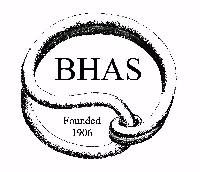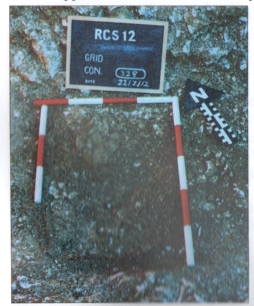Founded 1906
Archaeology Report Spring 2013
|
Selected Articles from the BHAS Bi-Annual magazine "Flint" Spring 2013
Heritage and proposed Community Projects BHAS have attended a number of meetings with regard to Brighton and Hove City projects and potential community engagement. The Brighton Biosphere project was launched in January and the Society have been asked to join the team as part of the community section having a regular engagement with the public and being considered as the main access to archaeology for the people of Brighton and Hove. Other meetings attended by the Society included a community project to develop and promote the new 'Keep' (East Sussex Records Office) to be opened at Falmer later this year. The Keep is promoting interest in local history and archaeology. Archaeology South East is in the process of making a Heritage Lottery Fund application and has asked BHAS to join them, along with other groups, as partners. The venture is hoping to investigate a number of archaeological sites over the South Downs and encourage public involvement in archaeological surveying, recording and excavation. Once again the Society's experience in public engagement is much valued.
Newmarket Farm During the 19th century a farm was built on Newmarket Hill, near Wooding-dean. The small cottage, barn and outbuildings were in use and survived until the Second World War when the structures were used for target practice by the military. The remaining buildings were demolished to a pile of rubble in the 1950's. In February members of the BHAS field unit met with Greg Chuter, Malcolm Emery of Natural England and David Cuthbertson to view the farm site which had recently had the scrub removed. David Cuthbertson's mother had lived in the farm before the War and David would like to reveal what remains, if anything, of the old farm that was the family home. BHAS have been asked to give archaeological support and training for the small group of David's volunteers. The project is planned to begin in the Spring.
Mv First Exhumation In the upper east/west ditch, having found nothing the weekend before and now, late into Saturday afternoon, having found nothing all day, I was not expecting to find much. However, some very thin bone started to appear -possibly skull - but of what I had no idea. Cleaning back to expose more, I decided to call John Funnel! over. With his 'oh, right, stop what you're doing' I guessed I must have come across something significant. John thought it might be human skull so, as a precaution, work was stopped and the bits of bone which had been placed into the finds tray were bagged up and the remains carefully recovered. Having contacted Carol White that afternoon for her expertise and confirmation, I picked her up from Falmer station the following day and, on the way to the site, she told me that Hayley Forsyth had been informed and would be joining us later. After uncovering it again and a little more tidying back, they both confirmed it was a baby burial, possibly neonatal. As the coroner could not be contacted, it being a Sunday, the police were then informed of the discovery which lead to a number of interesting return calls such as 'have we informed the next of kin' to which Carol replied 'no they're all dead'. After establishing that we were archaeologists, the police were happy for us to continue. However, it would not be until the following weekend that work could start again and the bones lifted because permissions and a licence were required to exhume. Until then the remains were once again covered over. Although Carol would be on site, I had asked for guidance as I knew the importance of this find. I also thought about handling human remains and if I wanted to do this even though this was to be done double gloved. Any bone that I had previously found was bagged separately as it had been handled. It is now hoped to get isotopic information from the teeth some of which could be seen in the partly degraded skull. The lifting of the bones was carried out by Carol, Hayley, David Ludwig (who had been working with me in the ditch) and myself all watched by Norman Phippard who videoed the whole process.
Clive Bean
|

